Abstract
We examined ampicillin-resistant strains of Haemophilus influenzae to compare the percentage of resistant organisms in each strain with the susceptibility to ampicillin by an agar dilution method. Using an inoculum of 104 colony-forming units, the minimal inhibitory concentration (MIC) increased with the percentage of resistant organisms in the strain. Laboratory-manipulated strains composed of different proportions of a susceptible and a resistant strain behaved similarly. The survival of isolated colony-forming units (colony MIC) was then determined by spreading inocula over the surface of a set of MIC plates, resulting in separation of individual colonies. This modification of the susceptibility test to the colony level gave end points that were clear and reproducible and that did not vary with changes in incubation time or temperature. True differences in susceptibility among strains were demonstrated by this method, whereas results of the conventional MIC test may reflect only the number of resistant organisms present in the inoculum.
Full text
PDF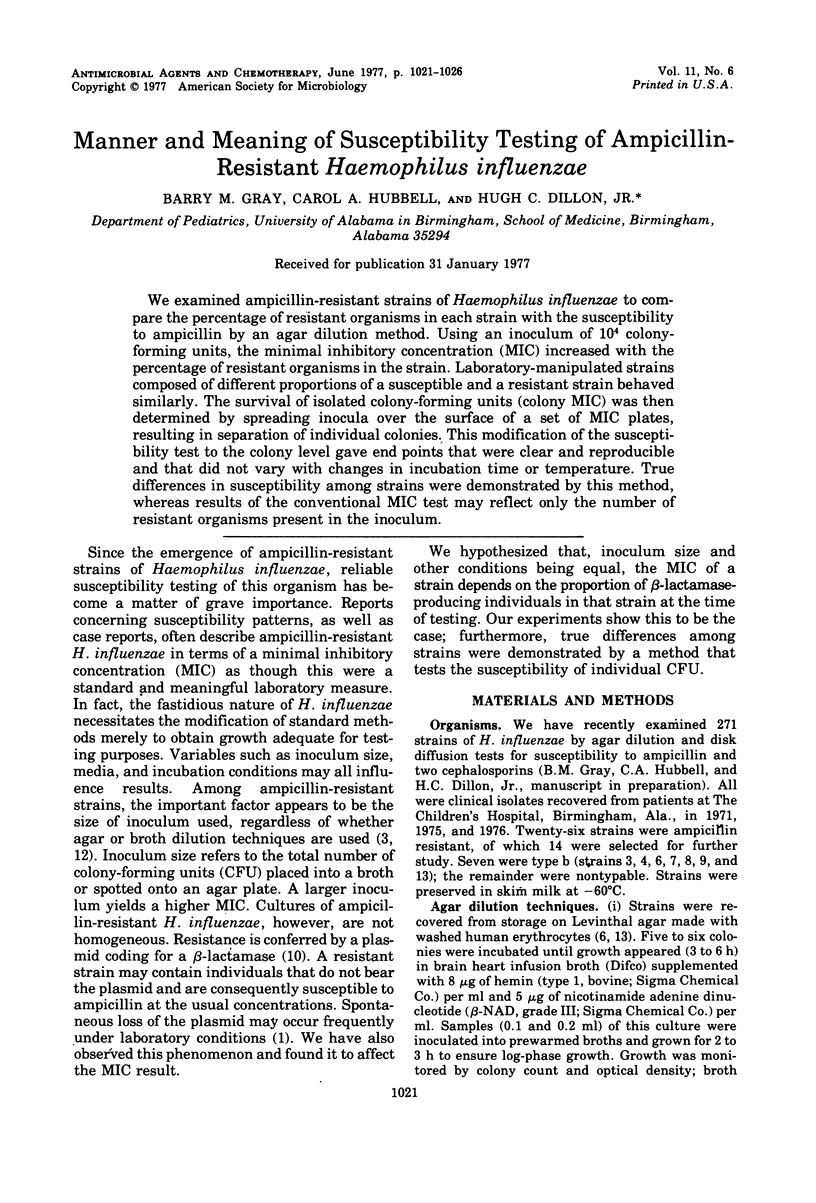
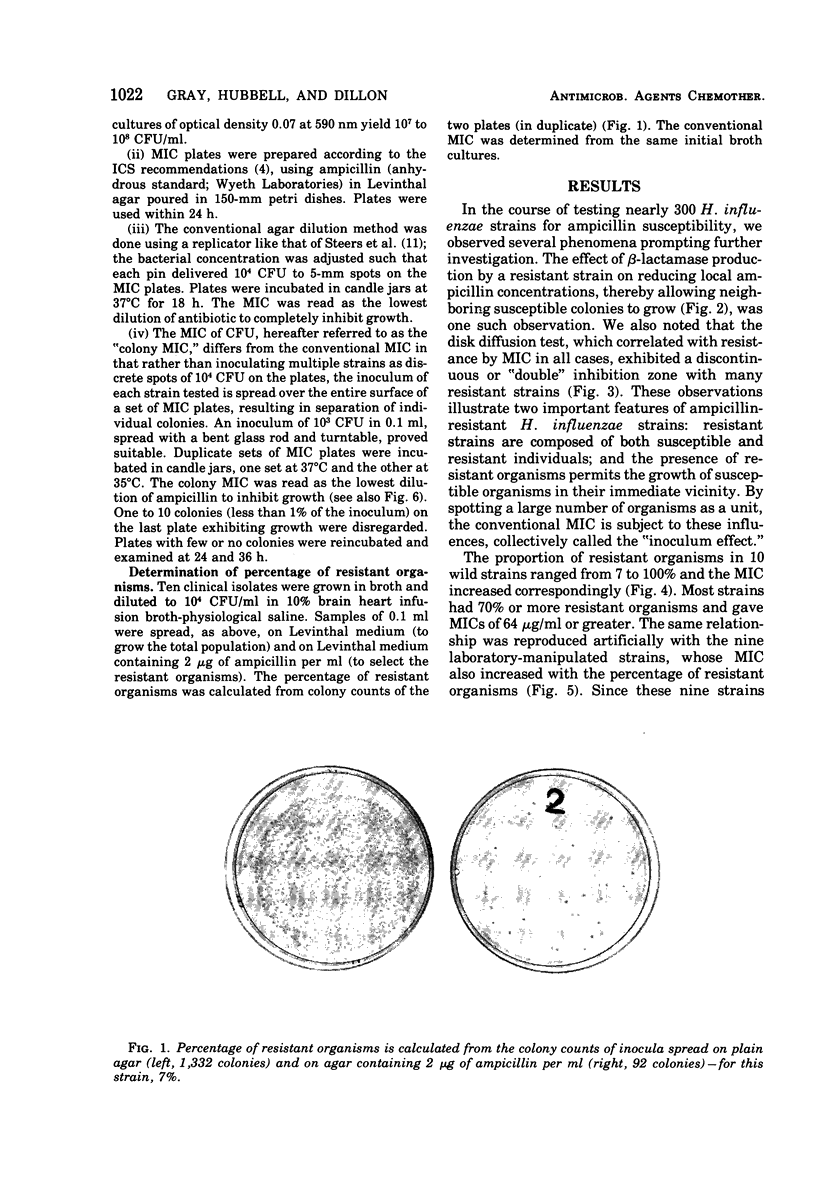
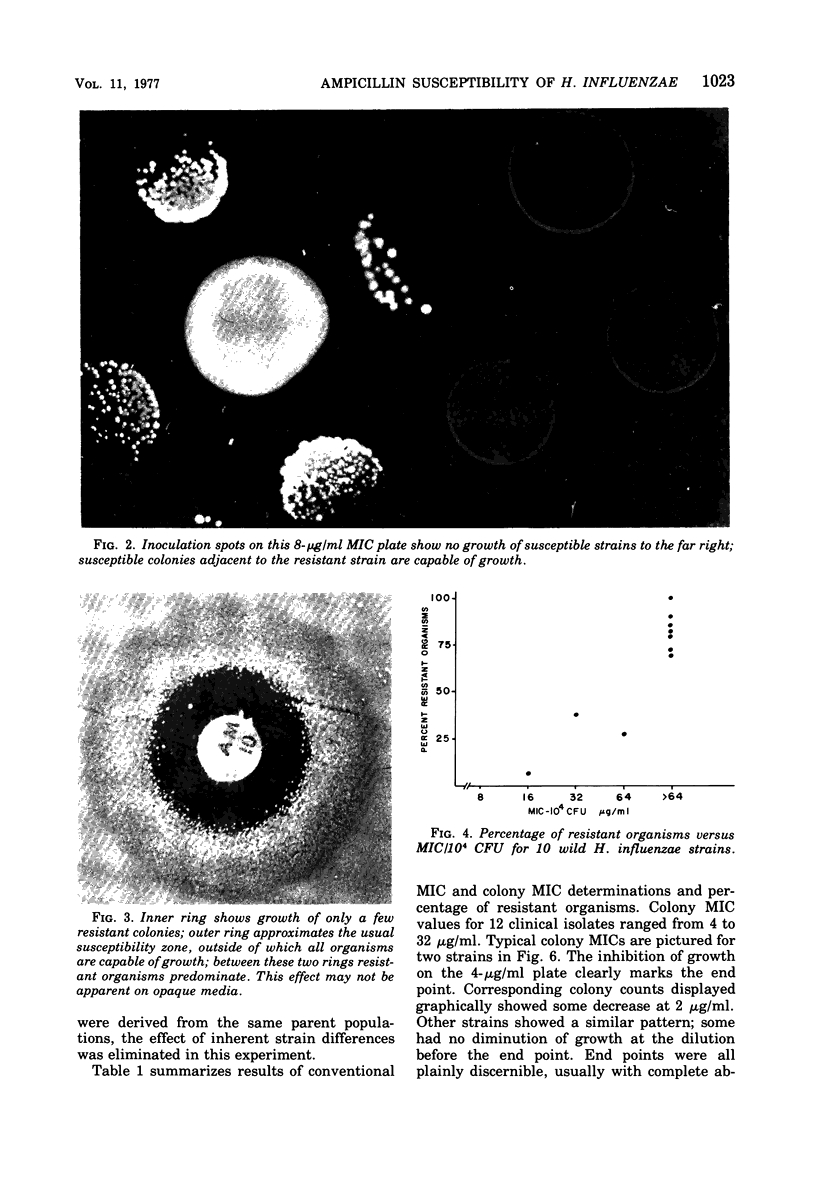
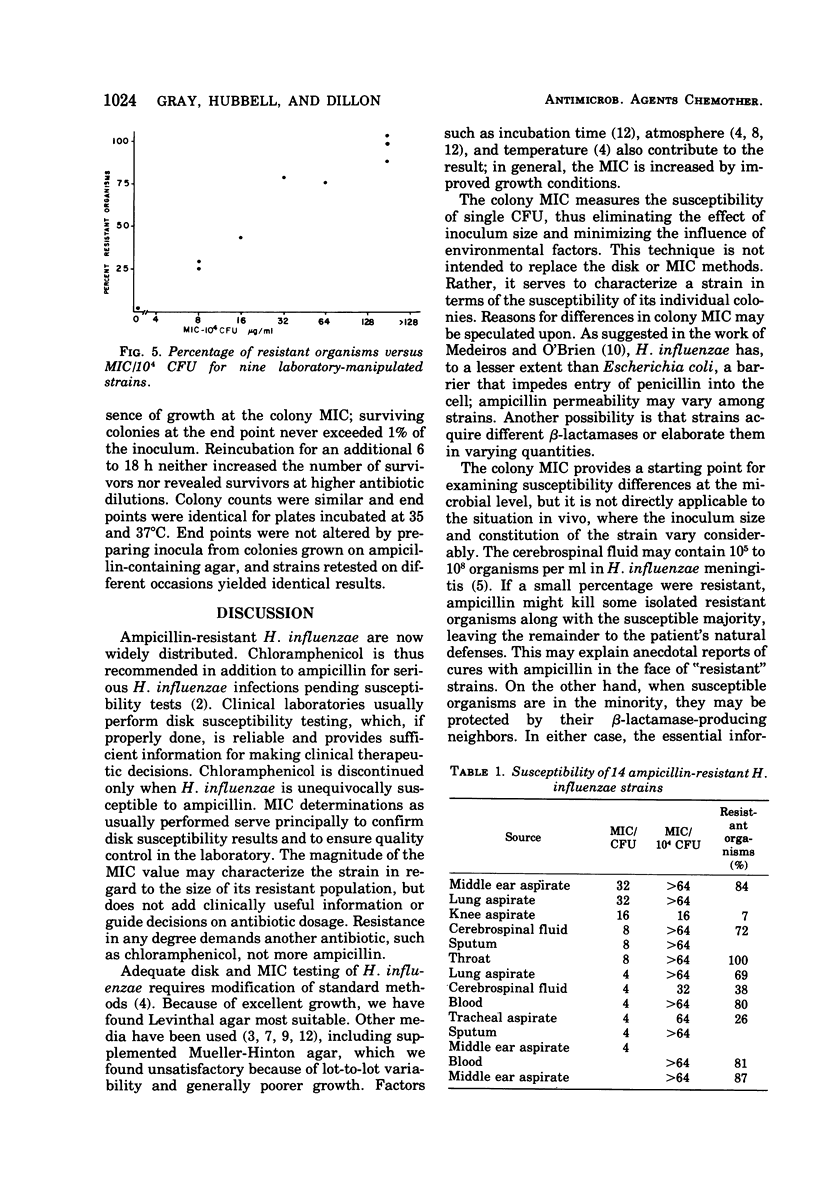
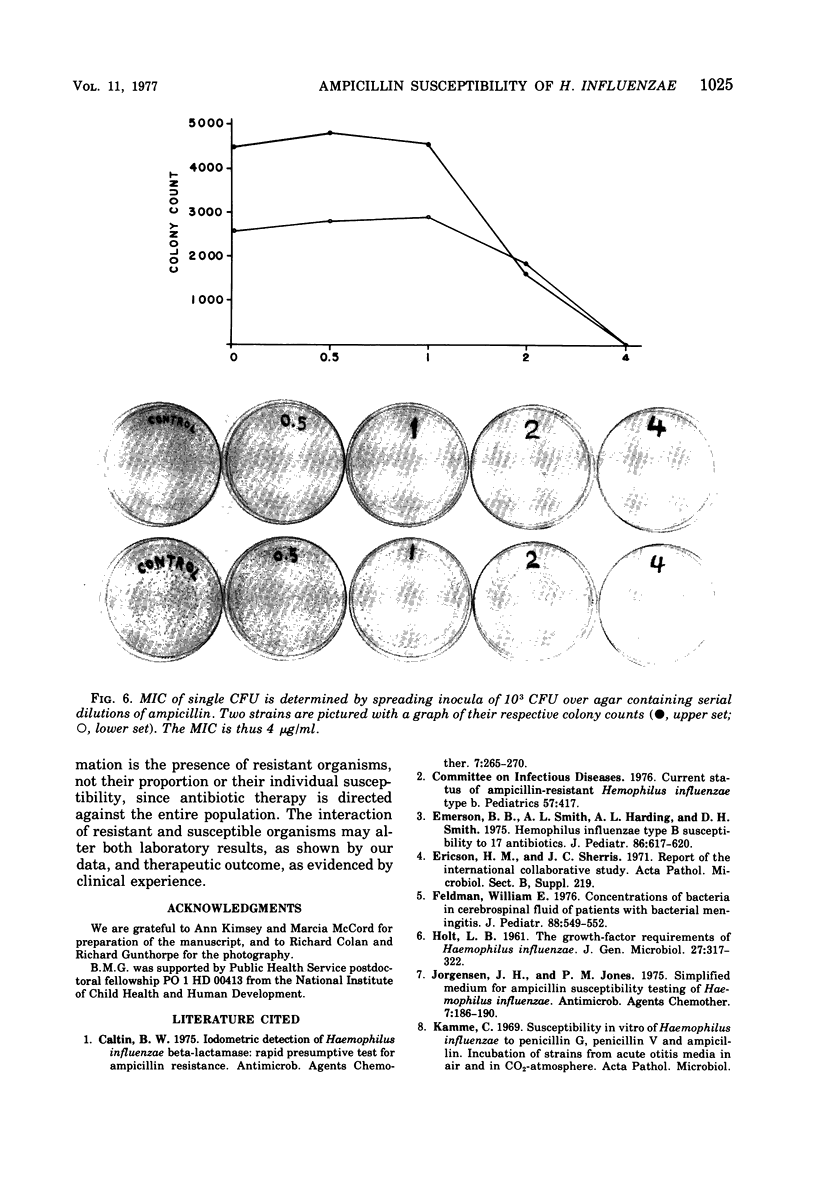
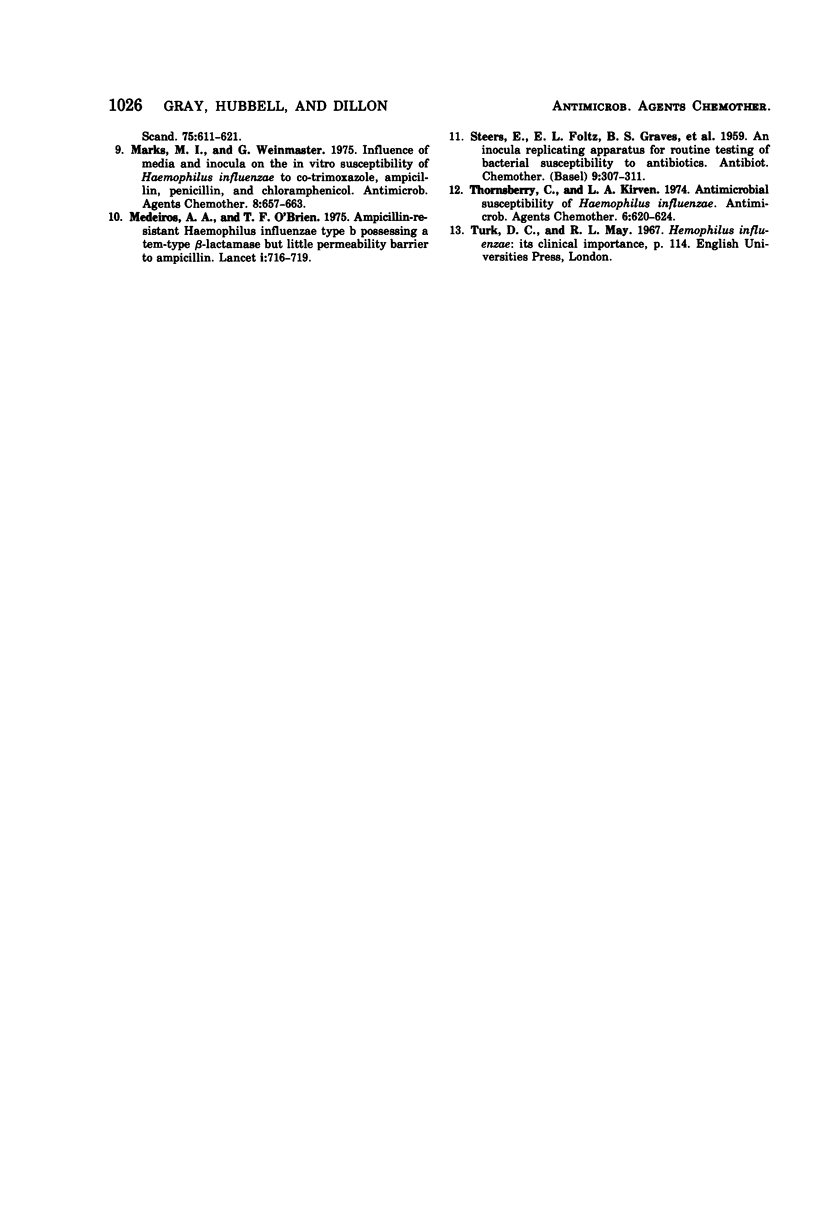
Images in this article
Selected References
These references are in PubMed. This may not be the complete list of references from this article.
- Emerson B. B., Smith A. L., Harding A. L., Smith D. H. Hemophilus influenzae type B susceptibility to 17 antibiotics. J Pediatr. 1975 Apr;86(4):617–620. doi: 10.1016/s0022-3476(75)80166-1. [DOI] [PubMed] [Google Scholar]
- Feldman W. E. Concentrations of bacteria in cerebrospinal fluid of patients with bacterial meningitis. J Pediatr. 1976 Apr;88(4 Pt 1):549–552. doi: 10.1016/s0022-3476(76)80003-0. [DOI] [PubMed] [Google Scholar]
- HOLT L. B. The growth-factor requirements of Haemopiius influenzae. J Gen Microbiol. 1962 Feb;27:317–322. doi: 10.1099/00221287-27-2-317. [DOI] [PubMed] [Google Scholar]
- Jorgensen J. H., Jones P. M. Simplified medium for ampicillin susceptibility testing of Haemophilus influenzae. Antimicrob Agents Chemother. 1975 Feb;7(2):186–190. doi: 10.1128/aac.7.2.186. [DOI] [PMC free article] [PubMed] [Google Scholar]
- Marks M. I., Weinmaster G. Influences of media and inocula on the in vitro susceptibility of Haemophilus influenzae to co-trimoxazole, ampicillin, penicillin, and chloramphenicol. Antimicrob Agents Chemother. 1975 Dec;8(6):657–663. doi: 10.1128/aac.8.6.657. [DOI] [PMC free article] [PubMed] [Google Scholar]
- Medeiros A. A., O'Brien T. F. Ampicillin-resistant Haemophilus influenzae type B possessing a TEM-type beta-lactamase but little permeability barrier to ampicillin. Lancet. 1975 Mar 29;1(7909):716–719. doi: 10.1016/s0140-6736(75)91630-x. [DOI] [PubMed] [Google Scholar]
- Thornsberry C., Kirven L. A. Antimicrobial susceptibility of Haemophilus influenzae. Antimicrob Agents Chemother. 1974 Nov;6(5):620–624. doi: 10.1128/aac.6.5.620. [DOI] [PMC free article] [PubMed] [Google Scholar]






